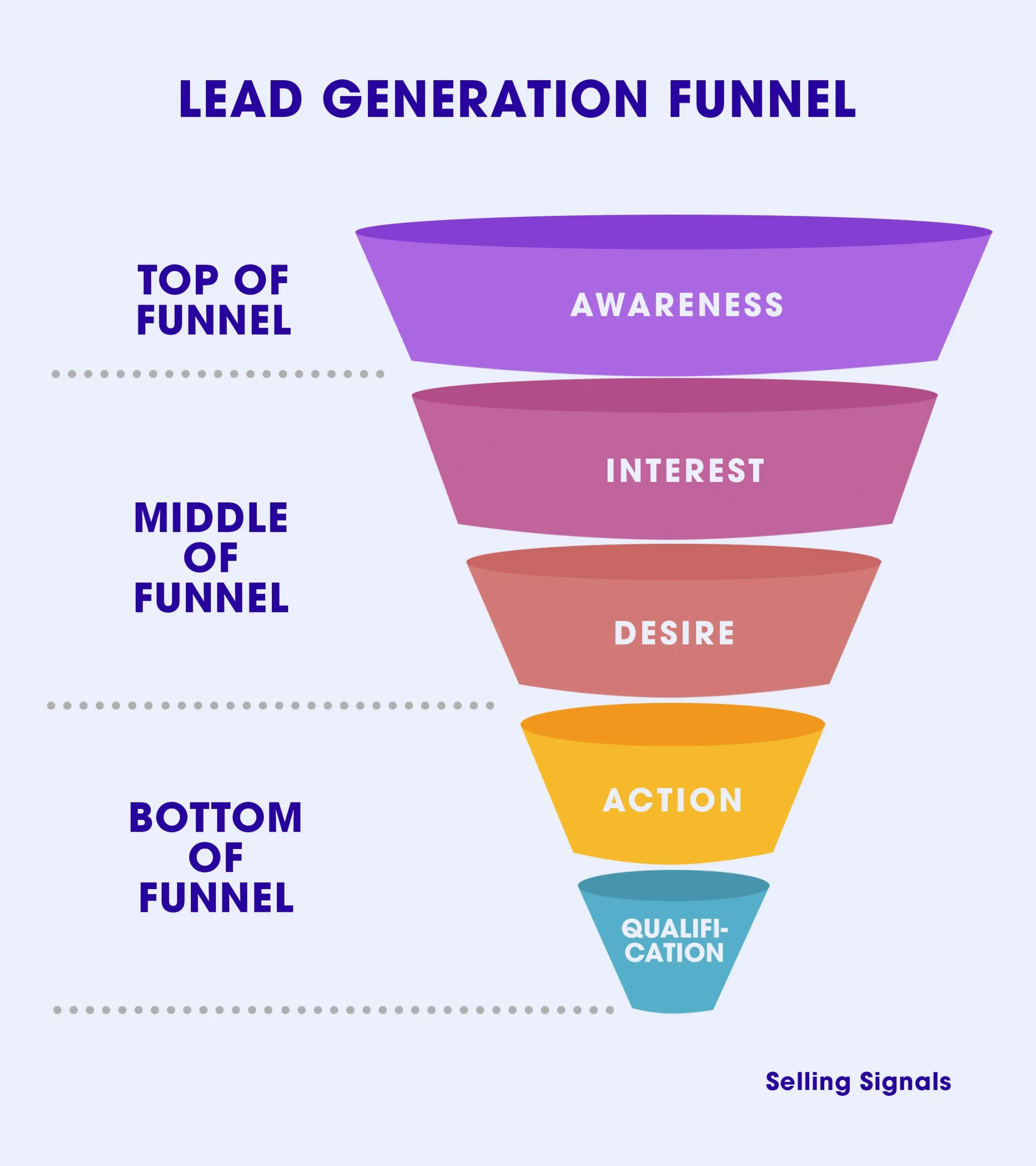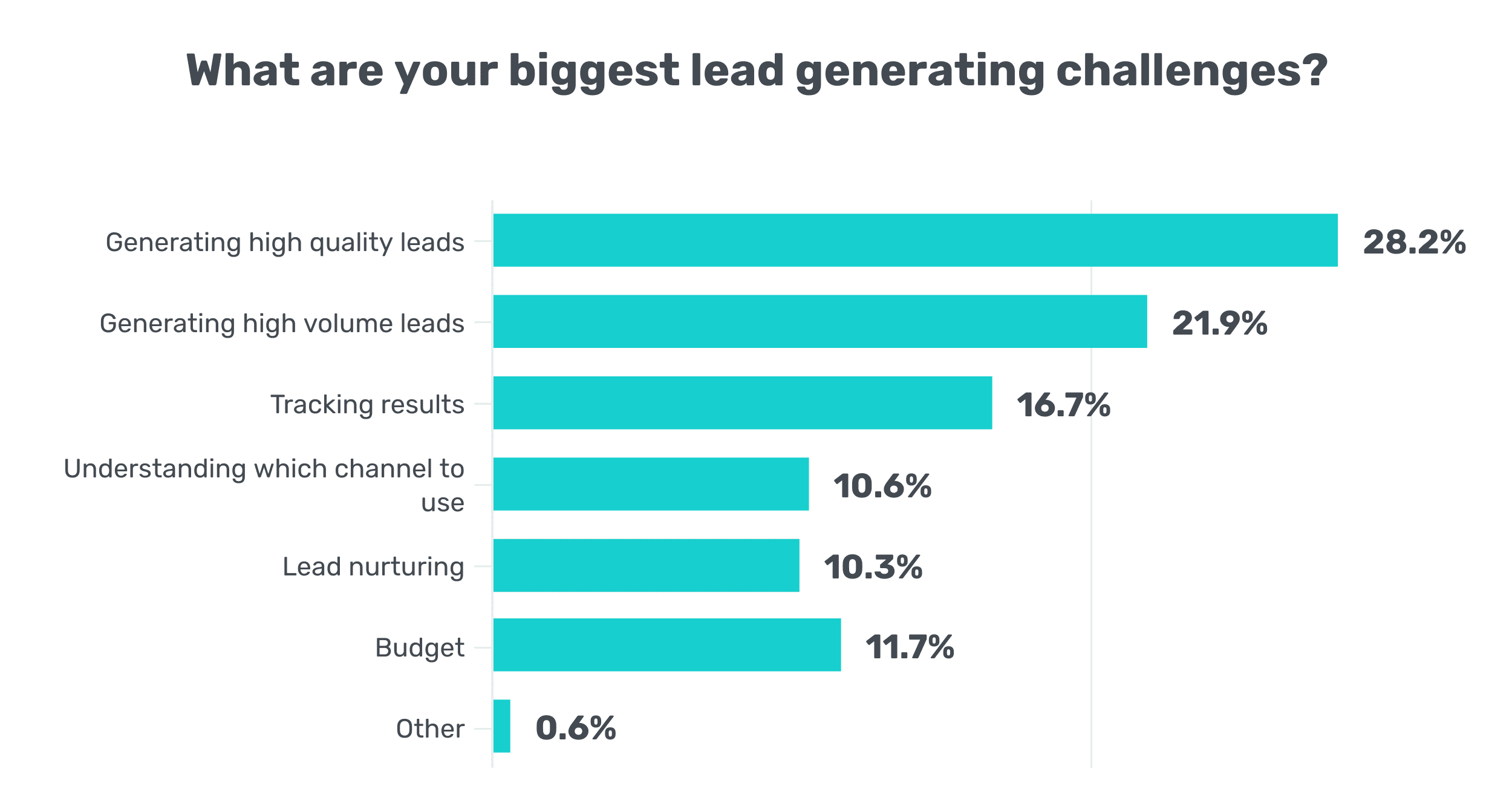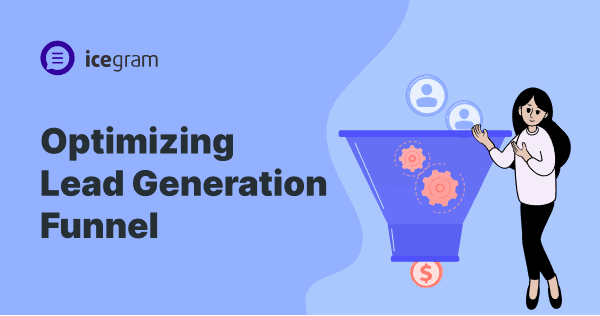Imagine you are a small business owner with a passion for your product or service. You’ve put in countless hours perfecting your offering, but you’re struggling to reach your target audience and convert them into customers.
This is where the lead generation funnel comes into play.
In this blog post, we will be exploring the concept of lead generation, its significance for businesses and common challenges to avoid on your path to success.
Importance of effective lead generation funnel for businesses
Lead generation is the lifeblood of any business, regardless of its size or industry. Through it, you will be able to attract and convert prospects into potential customers who have shown an interest in your products or services, which will result in revenue growth for your company.
Capturing relevant information about these individuals, such as their contact details or specific preferences, allows you to nurture and guide them through your sales funnel.
By implementing effective lead generation strategies, you can identify and target individuals who are genuinely interested in what you offer, increasing the likelihood of converting them into paying customers.
Different stages of a lead generation funnel
Embarking on a successful lead generation journey requires understanding the different stages of a sales funnel. By strategically guiding prospects through each phase, you can optimize your lead-generation process and cultivate meaningful relationships.

Stage 1 – Create awareness
At the beginning of the lead generation funnel, the primary goal is to create awareness of your brand and offerings. This stage is crucial for attracting a wide range of potential leads.
Engaging storytelling, compelling content, and targeted advertising are effective ways to capture the attention of your target audience.
By showcasing the value and benefits of your products or services, you can generate initial interest and intrigue among potential leads.
Stage 2 – Engaging audiences and building trust
Once you’ve captured your audience’s attention, the next step is to engage with them and build trust. Personalized interactions, such as responding to comments or inquiries, go a long way in establishing rapport.
Content marketing, such as informative blog posts or engaging videos, can position you as an industry expert and foster credibility. By consistently delivering valuable content, you create a connection with your audience, gradually nurturing them into potential leads.
Stage 3 – Obtaining lead information
To move prospects further down the lead generation funnel, you need to obtain their contact information. This is where lead capture techniques come into play.
Offer valuable resources or incentives, known as lead magnets, in exchange for their email addresses or other relevant details.
For example, you could provide a free e-book, exclusive discounts, or access to premium content. By focusing on providing value and addressing their pain points, you can entice prospects to willingly share their information with you.
Stage 4 – Prospecting
Once you have obtained lead information, it’s time to qualify and evaluate the potential of each lead. Not all leads are equal, and identifying high-value prospects is crucial for optimizing your lead generation efforts.
Utilize data and analytics to assess lead quality, engagement levels, and their alignment with your target audience.
By focusing on the most promising prospects, you can allocate your resources effectively and prioritize personalized communication and nurturing strategies.
Stage 5 – Bringing in high-value prospects
In the final stage of the lead generation funnel, your objective is to convert qualified leads into paying customers. This stage requires a combination of persuasive messaging, personalized offers, and ongoing lead nurturing.
Tailor your communication based on their preferences, challenges, and interests, showcasing how your products or services can provide the solutions they seek.
By fostering relationships and addressing objections or concerns, you can effectively guide high-value prospects towards making a purchase decision.
Incorporating lead generation strategies, lead nurturing, and effective lead capture techniques will pave the way for long-term success. Remember, each stage requires a personalized and interactive approach to build trust and drive conversions.
Common challenges and mistakes to avoid in the lead generation funnel

While lead generation can propel your business forward, there are common challenges and mistakes that can hinder your progress. Let’s explore a few:
- Inconsistent or incomplete targeting: Failing to clearly define your target audience or relying on broad, generic messaging can result in attracting leads that may not have genuine interest or purchasing intent. To overcome this, invest time in understanding your ideal customer profile and tailor your marketing efforts accordingly.
- Lack of compelling offers: Providing a strong incentive for potential leads to take action is essential. Your offer should address their pain points, provide value, and differentiate you from competitors. Avoid generic offers that fail to capture attention and focus on crafting compelling and personalized messages.
- Neglecting lead nurturing: Not all leads are ready to make an immediate purchase. It’s crucial to nurture leads through relevant and timely communication, delivering valuable content, and building trust. Automation workflows can streamline this process, ensuring leads progress smoothly through your sales funnel.
- Ignoring data and analytics: Tracking and analyzing your lead generation efforts is crucial for continuous improvement. Leverage tools like Zapier and Outbrain to monitor key metrics, such as conversion rates and engagement levels. These insights will enable you to refine your strategies and optimize your lead-generation process effectively.
Optimizing the lead generation funnel
Optimizing the lead generation funnel is crucial for sustainable business growth. By implementing effective strategies and leveraging key tactics, you can attract and convert high-quality leads into loyal customers.
Let’s explore the essential steps to optimize your lead generation process, from defining your target audience to monitoring and analyzing performance.
Defining target audience and buyer personas
To effectively target your audience, create buyer personas by understanding their demographics, pain points, and motivations. This guides content creation and allows tailored messaging to resonate with your ideal customers, capturing their attention and building a stronger connection.
Creating compelling and relevant content
Craft compelling and relevant content that addresses your audience’s challenges and offers valuable solutions. Showcase your expertise and unique value through blog posts, videos, and social media. Consistently deliver high-quality content to establish credibility and position yourself as a trusted resource.
Designing effective lead capture forms
Design user-friendly lead capture forms that are simple, concise, and transparent about data usage. Ask for essential information aligned with your goals. Use persuasive copy and visuals to encourage form completion. Prioritize a seamless user experience to maximize conversions.
Implementing lead nurturing workflows and automation
Implement lead nurturing workflows and automation to deliver personalized and timely communications to your leads. Segment them based on interests, behaviours, or funnel stage.
Provide valuable content, nurture relationships, and guide them through the buyer’s journey. Automation streamlines this process for consistent engagement and efficient lead management.
Monitoring and analyzing lead generation performance
Continually monitor and analyze performance metrics like conversion rates, engagement levels, and lead quality to optimize lead generation efforts. Leverage analytics tools for insights into campaign effectiveness. Identify areas of improvement and make data-driven decisions.
Test, iterate, and refine strategies for better results over time. Define your target audience, create compelling content, design effective lead capture forms, implement lead nurturing workflows, and monitor performance, so you can drive meaningful interactions and conversions.
Best practices and tips for effective lead generation
To drive successful lead generation, consider the following best practices:
- Understand your target audience: Take the time to define your ideal customer profile and understand their needs, pain points, and motivations. This knowledge will enable you to tailor your messaging and offers, increasing your chances of attracting qualified leads.
- Offer valuable and relevant content: Create content that educates, inspires, and solves problems for your target audience. Whether it’s blog posts, videos, or downloadable resources, ensure that each piece provides value and addresses the specific needs of your prospects.
- Optimize lead capture forms: Design simple, intuitive, and visually appealing lead capture forms. Collect only essential information, keeping the form concise and hassle-free for users. Incorporate persuasive copy and compelling visuals to encourage form completion.
- Leverage social proof: Utilize social proof elements such as testimonials, case studies, and reviews to build trust and credibility. Highlight success stories and positive experiences to demonstrate the value you provide to potential leads.
Common mistakes to avoid in the lead generation funnel
Keep these common mistakes in mind when trying to generate leads:
- Neglecting lead nurturing: Don’t solely focus on acquiring leads; invest in nurturing relationships with them. Implement automated workflows, personalized communication, and targeted content to guide leads through the buyer’s journey and increase conversion rates.
- Overlooking data and analytics: Failure to track and analyze lead generation metrics can hinder your progress. Regularly monitor key performance indicators, such as conversion rates, engagement levels, and lead quality, to gain insights and make data-driven decisions.
- Lack of personalization: Avoid generic, one-size-fits-all approaches. Tailor your messaging and offers to individual leads based on their interests, preferences, and stage in the sales funnel. Personalization enhances engagement and improves the likelihood of conversion.
Using WordPress plugins for effective lead generation
So far we’ve seen how optimizing the lead generation funnel is crucial for driving conversions and achieving business growth. Now let’s explore how Icegram Engage and Icegram Collect can contribute by leveraging personalized engagement and effective lead capture.
Icegram Engage – personalized engagement for effective lead nurturing
- Icegram Engage allows you to segment your leads based on their interests, behaviours, or demographics.
- By delivering targeted messages, you can engage leads with content that resonates with their specific needs and preferences, increasing the likelihood of conversion.
- You can automate personalized workflows, delivering timely and relevant messages throughout the lead generation funnel. By nurturing leads with valuable content and offers, you can guide them towards making informed purchase decisions.
- It supports various engagement channels, including popups, floating bars, slide-in messages, etc. These versatile options enable you to reach your audience at different touchpoints, maximizing visibility and engagement.
Icegram Collect – effective lead capture to optimize conversions
- Icegram Collect is designed to streamline the lead capture process, aligning with best practices to optimize conversions within the lead generation funnel.
- You can easily design visually appealing forms that align with your branding and capture the attention of your website visitors. By optimizing the design and layout of your forms, you can encourage form completion and capture more leads.
- Icegram Collect seamlessly integrates with popular email marketing and CRM platforms, allowing you to collect lead information and sync it directly with your existing systems. This integration ensures efficient lead management and enables effective follow-up and nurturing.
- It ensures that your lead capture forms are mobile-friendly and responsive, providing a seamless experience for visitors accessing your website from different devices. Icegram Collect also provides options to set targeting and display rules for your lead capture forms, allowing you to show forms at specific times, on specific pages, or to specific segments of your audience.
Conclusion
To excel in lead generation, following best practices and avoiding common mistakes is essential. By understanding your target audience, offering valuable content, optimizing lead capture forms, and leveraging social proof, you can attract and convert high-quality leads.
Remember to prioritize lead nurturing, embrace data and analytics, and personalize your approach. Icegram Engage and Icegram Collect serve as valuable tools that align with these best practices, supporting your journey towards successful lead generation.

